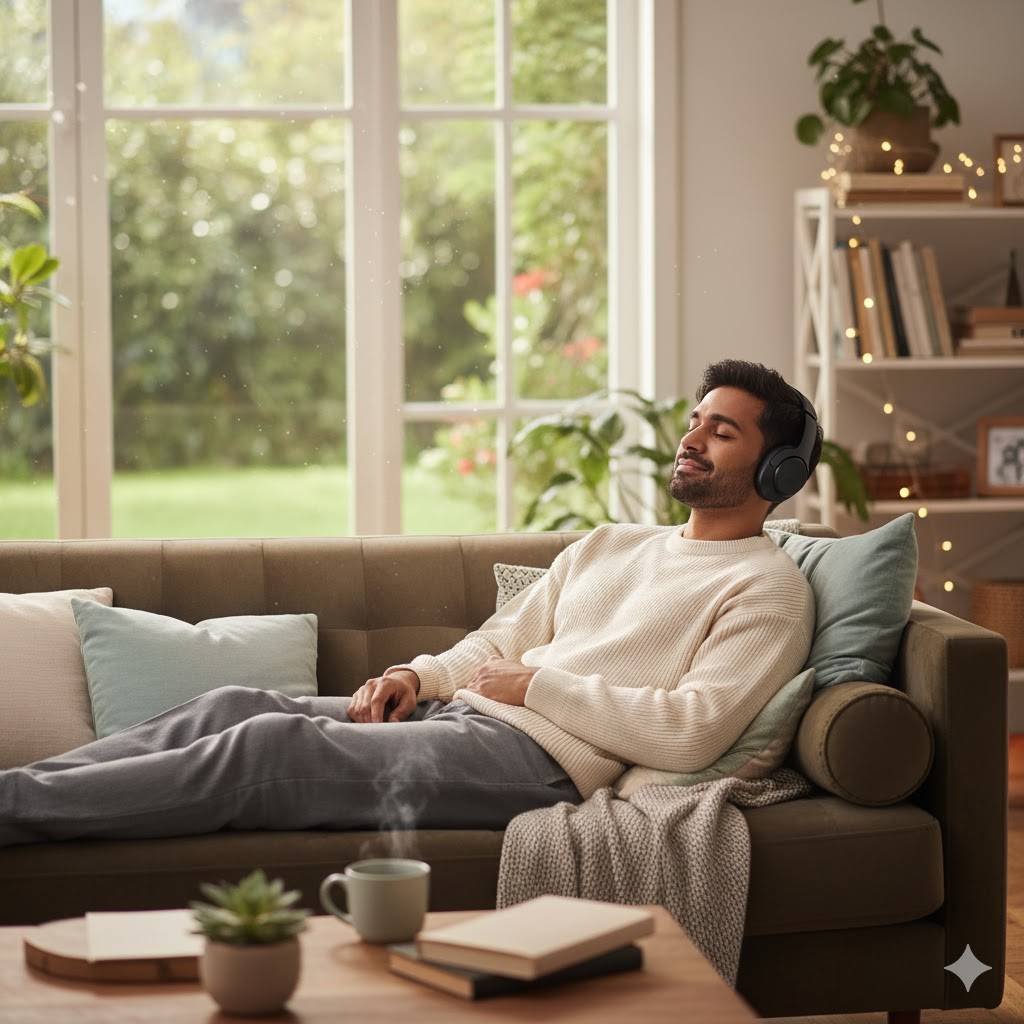In 2025, headphones and earbuds focus on smarter noise cancelling, hi-res wireless sound, multipoint connectivity, comfort, and sustainability with top models from Sony, Bose, Apple, and Sennheiser.
The Big Trends in Headphones & Earbuds (2025)
1. Next-level Noise-Cancelling & Adaptive Sound
One of the biggest shifts is how active noise cancelling (ANC) continues to evolve — not just more powerful cancellation of engine rumble or air-conditioning hum, but more sophisticated filtering of mid- and high-frequency distractions (chatters, keyboard taps) and better ambient/“transparency” modes that adapt to your surroundings. For example, RTINGS lists the top-performer for ANC headphones as the Sony WH-1000XM6, noting that they “significantly outperform their predecessor … at reducing the level of mid-range noise like office chatter.” Similarly, for earbuds, the Technics EAH-AZ100 takes the top spot for noise isolation in RTINGS’ rankings, thanks to a very strong ANC across the full frequency spectrum. In short: if you travel, commute, or work in noisy environments, ANC remains a must-have — but the quality of it is now a key differentiator.
2. Improved Sound Quality & Hi-Res/Codec Support
Wireless adoption is full-on by now, and the audio side is catching up. We’re seeing more hi-res codecs, better drivers, and design tweaks to improve acoustic performance even in wireless form factors. What Hi-Fi’s “best headphones 2025” list features the WH-1000XM6 as the “best premium noise-cancelling wireless headphones” thanks in part to their support for SBC, AAC, LDAC and LC3 codecs. RTINGS also highlight how Technics’ EAH-AZ100 offer top-tier sound, calling them “warm but smooth” and very capable across genres. So: wireless ≠ compromised sound anymore. Brands are investing in both driver/material and codec support.
3. Multipoint, Device Switching & Connectivity Features
Another trend: multipoint Bluetooth pairing, seamless switching between devices (phone → laptop → tablet), plus support for newer codecs and features like low-latency or spatial audio. RTINGS’ review of the AZ100 points out three-device multipoint, LC3, LE Audio and even support for Auracast. This matters if you’re living in a multi-device world (work laptop + phone + tablet). Also: Spatial audio/head-tracking is becoming more common, especially for earbuds.
4. Fit, Form & Genre-Specific Designs
Fit and comfort are still key — but brands are branching out: open-ear designs, ultra-light builds, workout-specific earbuds (IP rated, secure fit), and even open-type earbuds with drivers tuned for specific use-cases. For example, RTINGS list workout earbuds like the Bose QuietComfort Ultra Earbuds as top picks for running. Meanwhile, companies are releasing “audiophile wireless” models, premium materials (metals/leather in headbands), and even introducing open-back wireless headphones for home listening. Bottom line: the design isn’t just about looks — it’s about choosing the right form-factor for your lifestyle (commute vs desk vs workout vs home listening).
5. Sustainability & Repairability
A subtler but growing trend: sustainability. As high-end models cost more, brands are including repair-friendly features, replaceable parts, recycled materials and longer lifecycles. For instance, the WH-1000XM6 review mentions Sony’s more sustainable design, easier repair and recycled materials. While this may not yet be the headline feature for many shoppers, it’s a nice bonus and increasingly relevant if you want gear that lasts.
6. Value and Budget Options Getting Better
Finally: the budget segment isn’t being left behind. RTINGS shows that under-€100 (or under $100) earbuds are delivering surprising performance, especially if you’re not chasing top-end ANC or audiophile specs. This means there are better “every-day” options than ever before.
Best Models to Consider
Here are some standout models covering different categories:
- Sony WF‑1000XM5: A strong upper-mid wireless earbud choice, with excellent noise isolation and sound quality per RTINGS.
- Bose QuietComfort Ultra Earbuds: Excellent for workouts or commuting, solid build, comfort, IP rating and ANC performance.
- Apple AirPods Pro 3: If you're in the Apple ecosystem, these bring seamless integration plus updated features. RTINGS mentions that for iPhone users they’re among the best.
- Samsung Galaxy Buds3: A solid choice for Android users, helping bridge performance and cost.
- Anker Soundcore Liberty 4 NC: Great value pick — shows how budget models are closing gaps.
- Sennheiser Momentum True Wireless 4: For audiophile-leaning listeners who want premium sound and build.
- Nothing Ear: Stylish, mid-range option with good feature set (especially if you care more about style + ecosystem).
- Huawei FreeBuds SE 3: Budget-friendly pick that delivers decent performance for the price.
Final Thoughts
If you’re buying headphones or earbuds in 2025, here’s what I’d recommend you keep in mind:
- Define your primary use-case: commuting, travel, home listening, workouts the “best” model depends on that.
- Don’t sacrifice sound quality for wireless: many high-end wireless models now match wired performance more closely than years past.
- Check codec & connectivity support: LDAC, LC3, multipoint pairing matter if you care about sound and switching devices.
- Fit & comfort are personal: make sure ear tips, headband fit and seal are good for you especially with ANC, proper seal is critical for performance.
- Think about future-proofing: replaceable parts, sustainable design, readily available support.
- Get the right budget level for your needs: If you mostly listen in quiet environments, you might not need flagship prices. The value segment has matured.
Sources: RTINGS.com, What Hi-Fi, The Verge, Audio46 Headphone Store, The Guardian

Liam O'Sullivan
A passionate gamer and audio critic, Liam is known for his in-depth reviews of over-ear headphones and their performance in immersive gaming environments and studios. With a strong understanding of sound dynamics, he evaluates products to help producers, musicians and gamers find the best tools for their craft.

